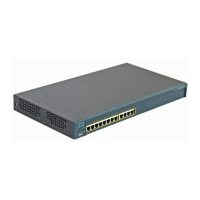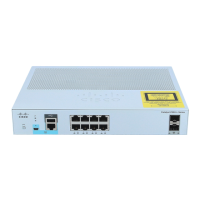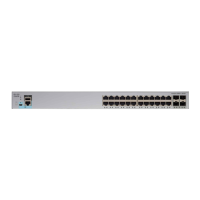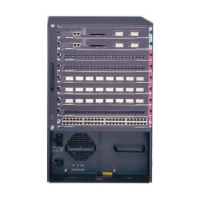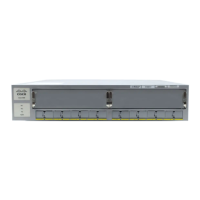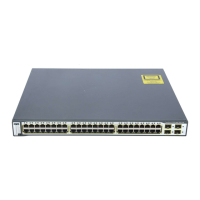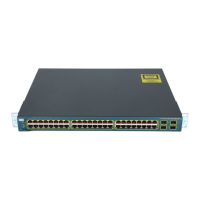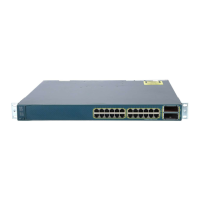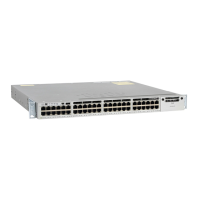Chapter 6 Configuring the System
Changing IP Information
6-8
Catalyst 2900 Series XL and Catalyst 3500 Series XL Software Configuration Guide
78-6511-05
You must specify the TFTP server name in the DHCP server lease database. You
must also specify the TFTP server name-to-IP-address mapping in the DNS server
database.
The TFTP server can be on the same or a different LAN as the switch. If it is on
a different LAN, the switch must be able to access it through a relay device or a
router. For more information, see the “Configuring the Relay Device” section on
page 6-9.
If the configuration filename is provided in the DHCP server reply, the
configuration files for a switch can be spread over multiple TFTP servers.
However, if the configuration filename is not provided, then the configuration
files must reside on a single TFTP server.
For CLI procedures, refer to the Cisco IOS Release 12.0 documentation on
Cisco.com for additional information and CLI procedures.
Configuring the Domain Name and the DNS
Each unique IP address can have a host name associated with it. The IOS software
maintains a cache of host name-to-address mappings for use by the EXEC mode
connect, telnet, and ping commands, and related Telnet support operations. This
cache speeds the process of converting names to addresses.
IP defines a hierarchical naming scheme that allows a device to be identified by
its location or domain. Domain names are pieced together with periods (.) as the
delimiting characters. For example, Cisco Systems is a commercial organization
that IP identifies by a com domain name, so its domain name is cisco.com. A
specific device in this domain, the File Transfer Protocol (FTP) system for
example, is identified as ftp.cisco.com.
To keep track of domain names, IP has defined the concept of a Domain Name
Server (DNS), which holds a cache (or database) of names mapped to IP
addresses. To map domain names to IP addresses, you must first identify the host
names and then specify a name server and enable the DNS, the Internet’s global
naming scheme that uniquely identifies network devices.
You can specify a default domain name that the software uses to complete domain
name requests. You can specify either a single domain name or a list of domain
names. When you specify a domain name, any IP host name without a domain
name will have that domain name appended to it before being added to the host
table.
